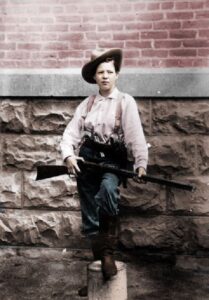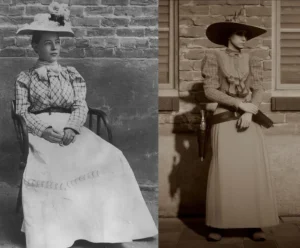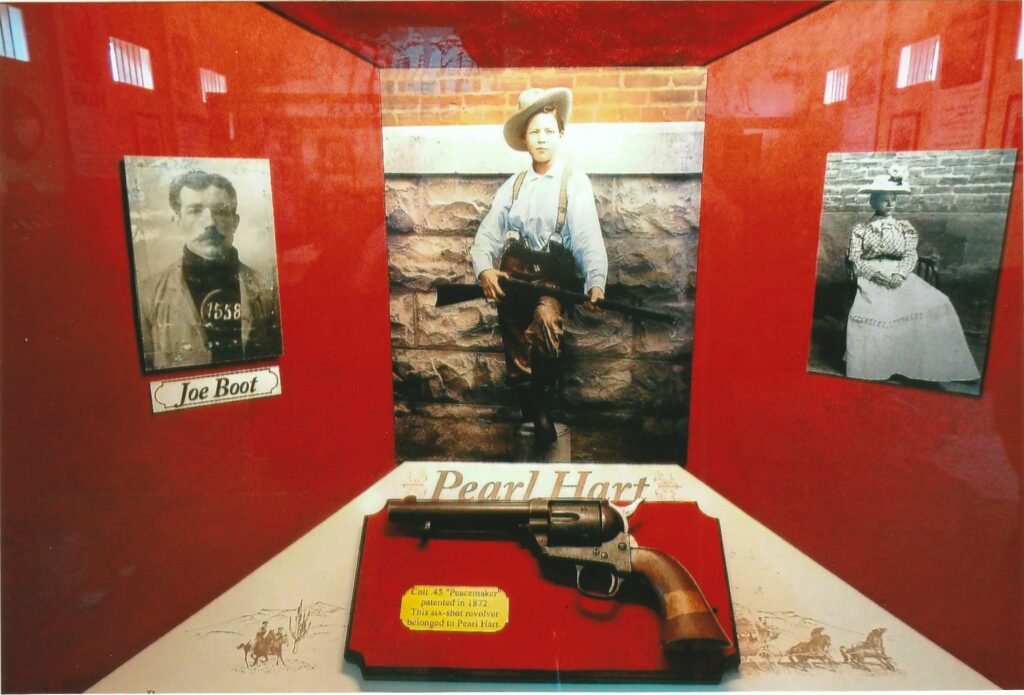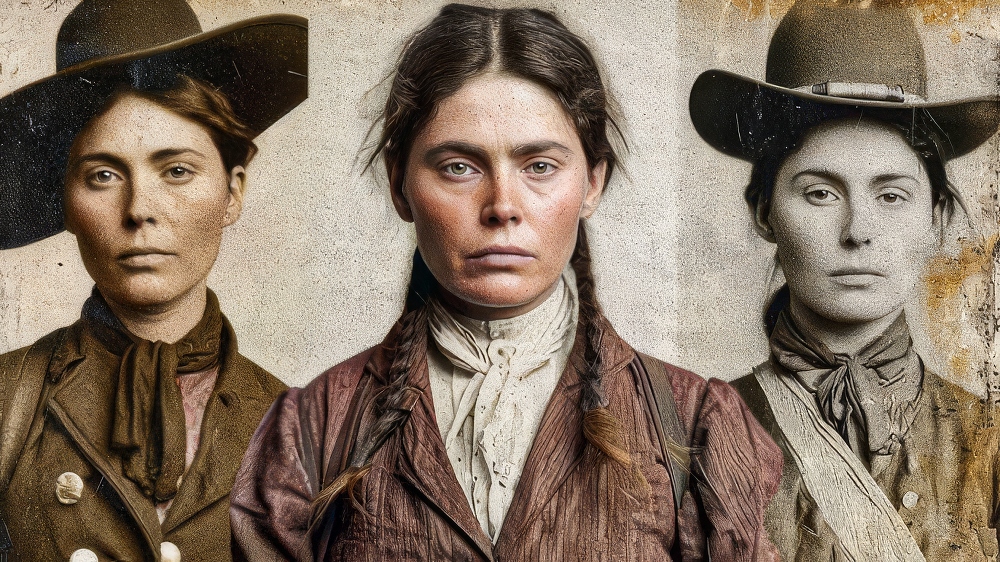In the lawless frontier of the late 19th century American West, legends were born of grizzled male outlaws and gunslingers who pulled off audacious stagecoach heists and train robberies. Names like Jesse James, Butch Cassidy, and Black Bart struck fear into the hearts of civilized folk. But amid this tapestry of notorious male bandits, there emerged a rarity – a woman outlaw whose exploits were just as daring and whose life story was even more fascinating. She was known by many names – Pearl Hart, Bandit Queen, and most famously, the “Lady Robber.”
The Early Life of Pearl Hart

Born in Ontario, Canada around 1871, the woman who would become Pearl Hart was christened Obediah Butler. Her parents, Mexican-Indian mother and an English immigrant father, struggled to make ends meet with their meager earnings as itinerant laborers on ranches and farms. From an early age, Obediah undoubtedly learned the harsh realities of an impoverished frontier existence that would later influence her lawless path in life.
By her late teens, Obediah had relocated with her parents to Minnesota and began working various odd jobs in and around Minneapolis. It was around this time that she first adopted the alias “Pearl Hart,” though the reasons for the name change remain unclear. Some say she wished to disassociate from her Native American heritage which was the source of bigotry and discrimination. Others claim she was running from the law even back then and needed to conceal her identity.
From Rags to Respectability… To Outlaw
In 1892 at the age of 21, Pearl Hart pulled off a most unusual feat for a woman of her era and background – she managed to find a path to middle-class respectability. She met a well-to-do miller and rancher from Ohio named Hart Bacon and married him, taking his surname as her own. For a few years, it appeared Pearl was destined for a quiet life as a housewife living comfortably on her husband’s earnings.
But by the late 1890s, the Hart marriage had soured. Pearl claimed her husband was an alcoholic who abused her, while their lack of children created further tensions. By 1899, Pearl had taken flight from Ohio, turning her back on the unfulfilling path of domesticity. With around $400 to her name (a considerable sum in those days), she caught a train out West to Denver, kicking off her nomadic wanderings across the Wild West frontier.
The Lady Bandit is Born
It’s unclear what provoked Pearl Hart’s transformation from dissatisfied housewife to outlaw, but by early 1900, she was firmly on the road to infamy. Arriving in the mining town of Mammoth, in the Arizona Territory, she first attempted to earn money by running a bakery and working for a milliner. But she soon became acquainted with a roguish gambler and saloon regular named Joe Boot. The two kindled a romantic relationship and began plotting their first stagecoach robbery.
On May 30, 1900, the daring criminal partnership struck for the first time. Wearing a bridle trail disguise and wielding a .38 revolver, Pearl Hart halted the Globe to Cananea, Mexico stagecoach as it traveled through the barren hills east of Globe, Arizona. Bursting dramatically from the bushes, the infamous “Lady Bandit” demanded that the driver and passengers disembark and hand over their valuables. Her accomplice Boot helped collect the loot from the eight other travelers, which netted around $500 cash along with jewelry and other personal items.
The papers were immediately ablaze with the scandalous tale of a female outlaw working as part of this “Bandit Pair.” While public opinion was mixed – some condemned Hart as a brazen criminal equally as dirty as her male counterparts, while others romanticized her as a reckless heroine of the fading Wild West frontier.
The Big Score and the Final Downfall
 Emboldened by their success, Pearl and her lover Joe Boot sought to pull off an even bigger heist. On June 8th just over a week after their first robbery, they struck again. This time, they targeted the Globe to Roosevelt stagecoach, which was carrying over $3,000 in fresh payroll cash for the employees of the nearby Navajo mining camp. Hart’s unique modus operandi was repeated – suddenly appearing in disguise, she forced passengers off the coach while her armed accomplice collected money and valuables.
Emboldened by their success, Pearl and her lover Joe Boot sought to pull off an even bigger heist. On June 8th just over a week after their first robbery, they struck again. This time, they targeted the Globe to Roosevelt stagecoach, which was carrying over $3,000 in fresh payroll cash for the employees of the nearby Navajo mining camp. Hart’s unique modus operandi was repeated – suddenly appearing in disguise, she forced passengers off the coach while her armed accomplice collected money and valuables.
But this crime would prove to be the couple’s undoing. Among the passengers, this time was the fearful owner of the mining company and his pregnant wife. Both vividly described Pearl Hart’s appearance and mannerisms to authorities – right down to the freckles on her face clearly visible beneath her mask. A massive manhunt ensued involving both law enforcement and Native American trackers. Four days after the second heist, the trail led to Pearl and Joe’s remote wilderness camp. The “Bandit Queen” was apprehended, but her accomplice Joe Boot evaded capture on that fateful day.
The Trial and Aftermath
The captured Pearl Hart immediately went on trial in Arizona’s Pima County, facing charges of stagecoach robbery, illegal entry into the U.S., and violating gaming laws. Her unrepentant swagger during the legal proceedings only amplified the public’s fascination with this female criminal folk hero. Though she pleaded not guilty, the evidence and witness testimonies left little doubt about Hart’s guilt in both robberies.

In July 1900, she was convicted on all counts and given a stiff penalty of five years of hard labor at the notorious Yuma Territorial Prison. Her sentence was eventually commuted after three years, perhaps owing to both the sensational media frenzy surrounding the “Bandit Queen” and sympathies from some who romanticized her as a rebel against the male-dominated Old West.
Little is known about Pearl Hart’s life after her release from the hellish confines of Yuma in 1904. Some reports claim she returned to her love of gambling by operating saloons in Chicago and Kansas City, while a dubious pamphlet published years later suggests she found work in Buffalo Bill’s Wild West show. Irrespective of her ultimate fate, Pearl Hart’s gripping tale of crime, survival, and unlikely rise from poverty cemented her place as a true gender-defying legend of the Wild West.

